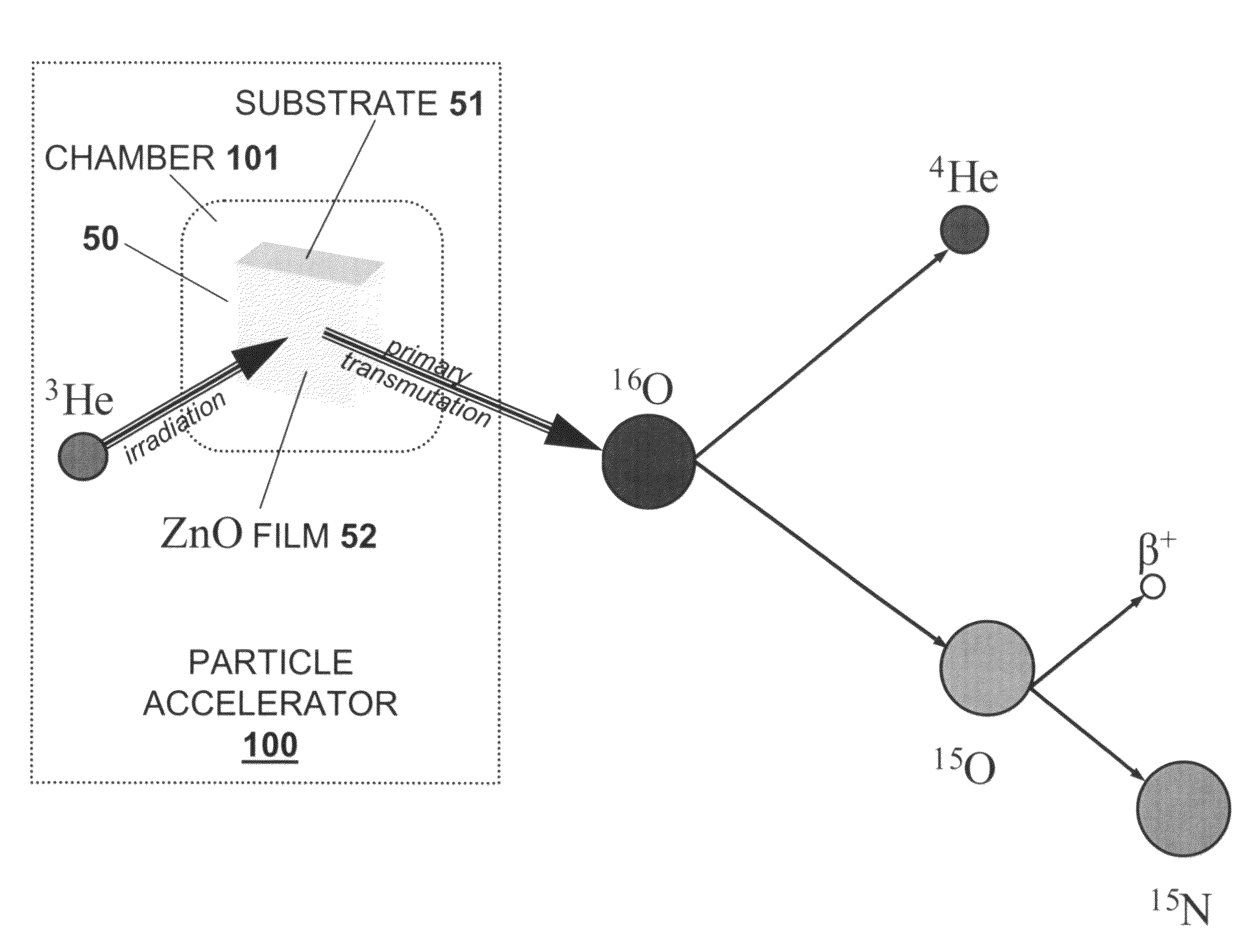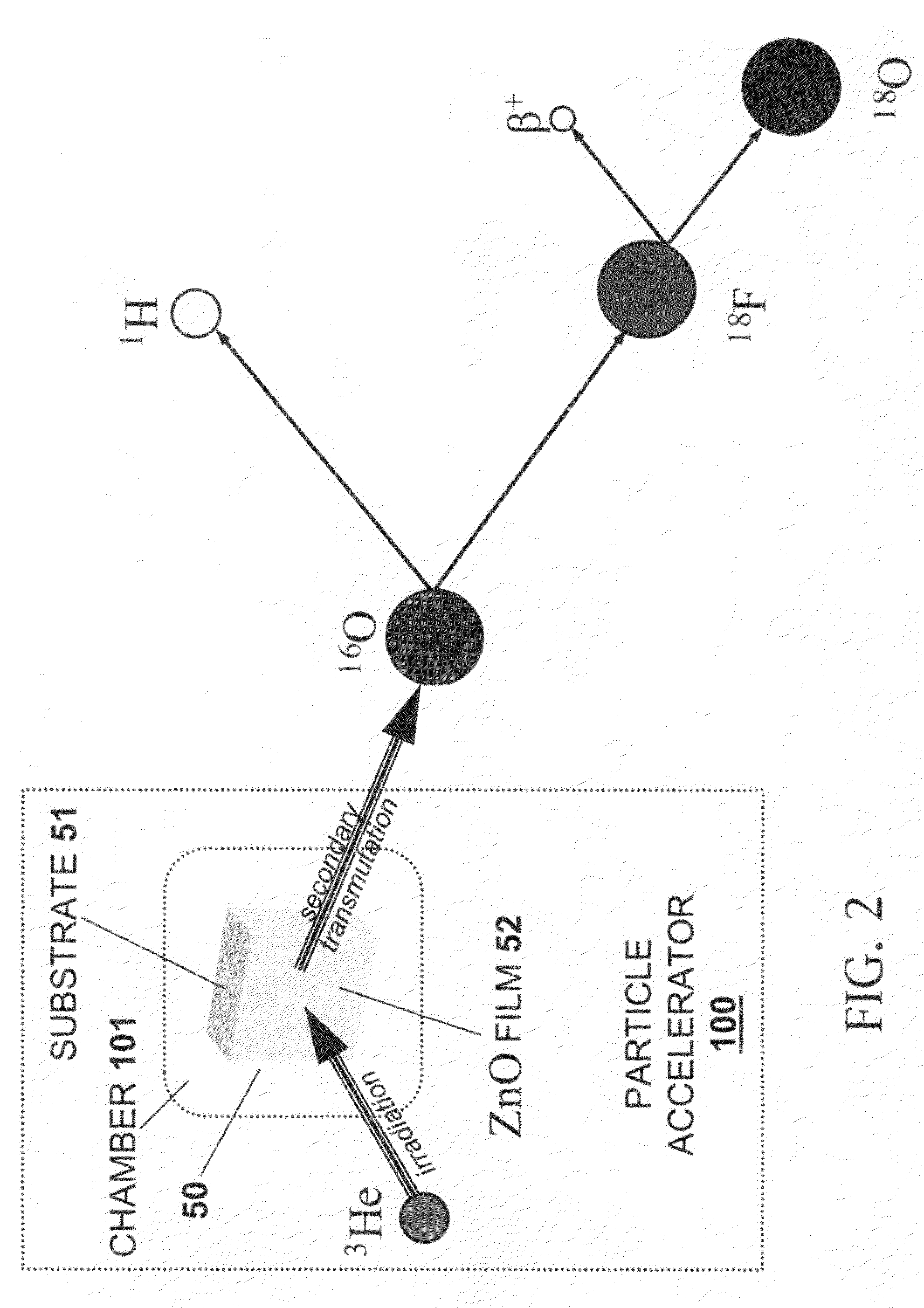Doping of semiconductor materials by nuclear transmutation
a technology of nuclear transmutation and semiconductor materials, applied in semiconductor devices, chemical to radiation conversion, electrical apparatus, etc., can solve the problems of reducing the quality of the resultant doped layer, reducing reducing the efficiency of the doping method, etc., to achieve the effect of improving the quality of the resultant doped layer, reducing the risk of ion implantation and diffusion, and highly undesirable effects
- Summary
- Abstract
- Description
- Claims
- Application Information
AI Technical Summary
Benefits of technology
Problems solved by technology
Method used
Image
Examples
Embodiment Construction
[0035]In its basic principle, the present invention effects nuclear transmutation doping (NTD), according to which a nuclear reaction is induced using an energetic ion incident on a lattice atom, thereby producing an atom of a different species in the material. The present invention uniquely features the utilization of high energy 3He ion beams to bring about nuclear transmutation of materials.
[0036]Of particular interest to the present inventors is their novel use of high energy 3He ion beams to effectuate nuclear transmutation of zinc oxide, whereby nitrogen is produced from a reaction with oxygen in a crystalline ZnO thin film. As elaborated upon hereinbelow, the present inventors successfully tested this mode of inventive practice and found that, vis-à-vis the original zinc oxide films, the inventively doped zinc oxide films were significantly different in terms of resistivity, photoconductivity, scanning electron microscopy, cathodoluminescence, and ion beam analysis. Of partic...
PUM
 Login to view more
Login to view more Abstract
Description
Claims
Application Information
 Login to view more
Login to view more - R&D Engineer
- R&D Manager
- IP Professional
- Industry Leading Data Capabilities
- Powerful AI technology
- Patent DNA Extraction
Browse by: Latest US Patents, China's latest patents, Technical Efficacy Thesaurus, Application Domain, Technology Topic.
© 2024 PatSnap. All rights reserved.Legal|Privacy policy|Modern Slavery Act Transparency Statement|Sitemap



